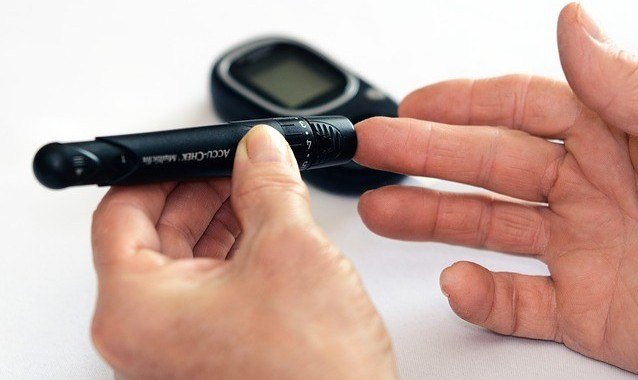The growth of diabetes and the allied risk from this disease is definitely on a growth spurt since the last few years. Whatever the consequences are, it is not necessarily surprising that not many people are aware of the complexities behind this condition.
Whatever it be, it is vital to ensure that you focus on this condition, mainly because of the kind of risks it brings along with it.
Diabetic blood glucose testing and monitoring on a regular basis is critical, which is why it is important to ensure that you know the testing procedures and even the products that are involved with it.
Timely tests can help to regulate and manage the condition without fail, so if your blood glucose levels have constantly been fluctuating, it is time that you do delve your focus around on the same.
In this article, we will be discussing everything you need to know about the prospects of diabetes blood glucose monitoring and testing.
Tests for Type 2 Diabetes Diagnosis
One of the primary reasons why Diabetes is one of the leading diseases across the world is because of the fact that people fail to realize that they could be suffering from this condition.
Diagnosis is one of the biggest and the most important prospects for Type-2 Diabetes.
If you are sensing that you might be fighting with an early stage of diabetes (pre-diabetes), it is best to take a test.
There are predominantly four different tests that are conducted to check whether you have diabetes or not.
Glycated hemoglobin test
Often known as the A1C test, the glycated hemoglobin test provides with an average estimation of the blood sugar levels in a person for the past two to three months. There are three indicative measurements when it comes to this particular test.
- If the levels are below 5.7, the patient is not diabetic
- If the levels are in between 5.7 to 6.4, the patient is pre-diabetic
- If the levels are more than 6.5, the patient is diabetic

Owing to the severity of the test, it is hard to find it available around to get it done. However, we have noted a popular A1C Testing Kit before.
Additionally, health issues like an uncommon variant of hemoglobin and such can also be a contributing factor to the condition even more so.
While doctors believe A1C testing is one of the most accurate tests to confirm your diabetes status, if this test is not possible to get done, there are some other types of blood glucose tests that can definitely help to diagnose the condition.
Random blood sugar test
As weird as it sounds, it is actually a type of blood test which is conducted to determine the condition of diabetes in an individual.
Regardless of the last meal that you had, if your blood glucose levels are above 200 mg/dL, the chances are that you have diabetes and need the problem tended to as soon as possible.
Additionally, if you are suffering from frequent urination and feelings of extreme thirst, these are accountable symptoms for the condition even further.
We have previously discussed Symptoms of Type 2 Diabetes in Women, Signs of Diabetes in Men, and Early warning signs of diabetes in adults and children.
Fasting blood sugar test
The third on the list is the fasting blood sugar test. Following an overnight fast, a blood sample is collected from the patient.
- If the levels of blood glucose are less than 100 mg/dL, the patient doesn’t have diabetes
- If the levels of the blood glucose are in between 100-125 mg/dL, the patient is pre-diabetic
- If the levels of the blood glucose are more than 126 mg/dL, the patient is diabetic
Oral Glucose tolerance test
Last on the list of the diabetes diagnostic tests is the oral glucose tolerance test. It is often the least performed test to diagnose diabetes.
Oral glucose tolerance test is a type of tests conducted mainly during pregnancy to monitor moms for gestational diabetes.
The patient is asked to fast the entire night, and then the next day, they are given a sugar liquid in the doctor’s office. The blood glucose levels succeeding that is determined and tested out for the next two hours.
- If the level of blood glucose is less than 140 mg/dL, it is considered normal
- If the level of blood glucose is in between 140-199 mg/dL, the patient is deemed to be ‘pre-diabetic’.
- If the level of blood glucose is more than 199 mg/dL, the patient is considered ‘diabetic’.
Types of Blood Sugar Monitors
Now that you have a pretty good idea about the varying kinds of tests involved in diagnosing and monitoring diabetes, it is time we finally divert our focus on the different types of monitors that are available for us.
While there are a number and types of glucose monitoring products available around, there are predominantly three categories of blood glucose monitors.
Self Monitoring of Blood Glucose
While rushing to a diagnostic clinic every single time to get the blood glucose levels tested out definitely doesn’t seem like the best option around, so there are several alternatives to that hurdle.
The solution is self-monitoring for blood sugar. This is technically the “prick the finger” test because you need to prick your finger to draw the blood out.
Once the blood is out from the ‘prick’, you need to apply the sample blood on the strip, and if you are using one of the quality products, the chances are that you will get the best of the results in a matter of seconds.
Follow the link for our recommendations of Best Home Blood Pressure Monitors.
Don’t rush after the “cheap” price; instead, try and focus on the quality of the product that you are purchasing.
Continuous Glucose Monitoring Machines
Another one of the beneficial types of blood glucose monitoring device is continuous glucose monitors.
These tests help in getting a good idea about the kind of blood glucose fluctuations that one experienced throughout the day. It helps take readings every few minutes all day and night.
The only catch in this method of testing is that you need to ensure the monitoring sensor is located under the abdominal skin while the monitoring is ongoing, sometimes day and night.
Not just that, to get an accurate result, you need to ensure that the Continuous Glucose Monitor is working properly.
Therefore, doctors recommend that you do multiple finger prick tests on a daily basis with the self-monitoring glucometer to make sure it functions accurately.
Continuous Glucose Monitors are not necessarily meant or recommended for everyone, which is why it is essential to talk to your doctor before you take this path at all.
Non-Invasive Glucose Meters
Last but not least, on the list is the non-invasive glucose meters.
Majority of the designs of the products under this category are still work in progress.
The ideology behind this is the fact that they don’t necessarily require any kind of finger pricks.
Instead, they are calibrated with low power radio waves which pass through the blood-rich areas in the body to monitor the blood sugar level so does help to control the glucose levels effectively.
The models under this specific product and monitoring method are still ongoing the developmental phase and is hopefully become available across the globe for people to access them.
We do not recommend jumping in and purchase the non-invasive monitors available in the market as yet, given their effectiveness is uncertain.
Content of a Blood Glucose Monitoring Kit
As we did mention about the best self-monitoring glucose kits before, the same is possibly one of the very best options to adhere to when you need to keep a close eye out on the levels of the blood glucose to maintain your condition of diabetes.
Some important contents of this kit to include:
- Glycemic reader
- Test Strips
- Lancing (or lancet) device to prick the finger
When Should You Check Your Blood Sugar?
The correct timings for when one needs to get their blood sugar tests done include two distinctive scenarios. Diabetes, be it Type-1 or Type-2 are the conditions that require someone to get their blood glucose tested out on a regular basis.
Based on the treatment plan, there are two conditions when one needs to get their blood sugar tested, which include:
Type-1 Diabetes
The very first of the lot is the Type-1 diabetic patients who need to get their conditions checked out on a regular basis, daily, to ensure that your blood glucose levels are regulated and controlled.
Additionally, given the fact that this is often the “rare” type of diabetes compared with Type 2, it is important to be very cautious about this specific condition.
Type-2 Diabetes
The second reason for getting regular blood glucose tests done when you have prediabetes or Type-2 Diabetes.
If you are on tablets, you may not need daily blood sugar tests. However, if you are taking insulin to keep your levels of blood glucose in check, the chances are that you will need to get the glucose tests done on a daily basis, or as per the doctor suggests you.
The testing is usually advised to be done before breakfast and dinner time.
Tips on Testing Blood Glucose at Home
Next on the discussion is to focus on the tips that one needs to pay close attention to when it comes down to testing the blood glucose at home.
There are several tips that are involved when it comes to testing the levels of blood glucose in the body, but for your convenience, we are going to be discussing the top 5 of the lot.
Follow the link for more tips on purchasing a blood pressure monitors.
Use a reliable meter
It goes without saying that given the importance of this, it is important to ensure that you do use a reliable meter instead of a generic one.
Blood Glucose Monitors might come off for a ‘cheaper’ price, but the same is not necessarily that accurate that you would want it to be.
Use specific strips meant for the meter
Next on the list of discussion is to ensure that you do use the particular strips that are meant for your glucometer instead of getting the random ones that are available for a ‘cheap’ price.
Fill the landing section effectively
Once you have pricked your finger, it is essential to ensure that you do have enough sample blood to fill in the landing section of the strip.
Having an inappropriate amount can cause issues with displaying the results.
Check the readings at different times of the day
Blood glucose levels are subjected to fluctuate throughout the day.
That is the main reason why it is best suggested ensuring that you do focus on taking the readings of the blood glucose levels in the body at different times, throughout the day, depending on you the severity of the reading (or diabetes) and your doctor’s recommendations.
Know the goal numbers
Last but not least is to be aware of the goal numbers for your individual condition.
The main reason behind the same is because of the fact that knowing these numbers helps you regulate the condition a lot better than what you would technically think of acknowledging.
Knowing the goals also ensures that you know if your glucose levels are improved and maintained, or not.
What to look for when buying glucose monitor?
Knowing the basics of how a glucometer works do help a lot when it comes to choosing a blood glucose meter to use at home.
Given the fact that they don’t technically come ‘cheap’, it goes without saying that your health is vital and therefore, it is crucial to ensure that you do pay close attention to some of the factors while buying the glucose monitor.
Cost
The very first prospect to look around at is the cost of the glucometer. We all have an opinion about what we spend on each product we purchase.
You’d be surprised to know that there are several factors involved in this specific prospect. Whatever the consequences are, don’t just settle for a “cheap” and generic device.
Instead, try and ensure that the one you are getting is actually effective and has excellent reviews.
Our recommendations on best blood glucose monitors were noted before.
Effectiveness
Next on the list of consideration is the reliability of reading and efficacy of the glucometer.
Majority of the people get self-monitoring devices to ensure that they can get easily and accessible hands on the blood glucose levels in the body.
However, if the reading is not reliable, what is the point? In that case, your investment is just wasted.
Easy maintenance
The last but not the least on the list of consideration while buying a glucose monitoring device is to ensure that the one you are getting comes with easy maintenance.
In this view, it is important to ensure that the test strips are not just easy to hold, but also good enough to last you for an extended period of time.
All in all, when it comes to the glucose monitoring devices and such around, it is crucial to ensure that the one you are getting is not just fairly priced but also gets the job done effectively.
There are a plethora of options that you can choose from, but it is important to ensure that you opt for the ones with effective results and good reviews because that is what matters at the end of the day.
Our recommendations on best blood glucose monitors were noted before.










Recent Comments